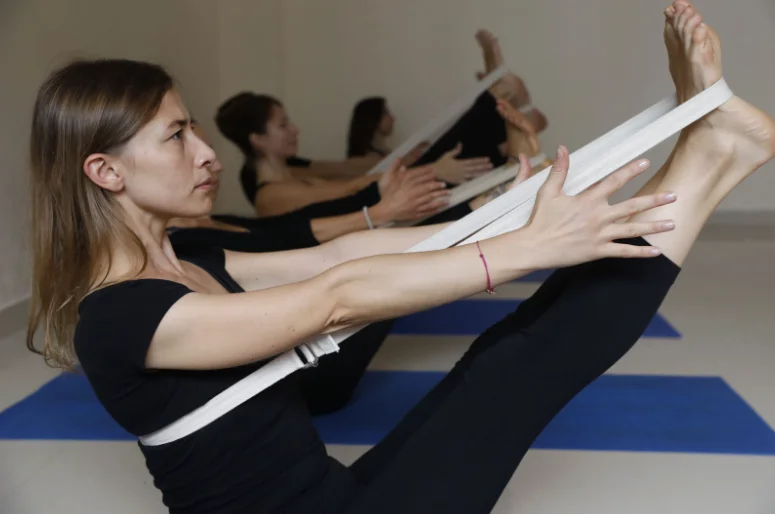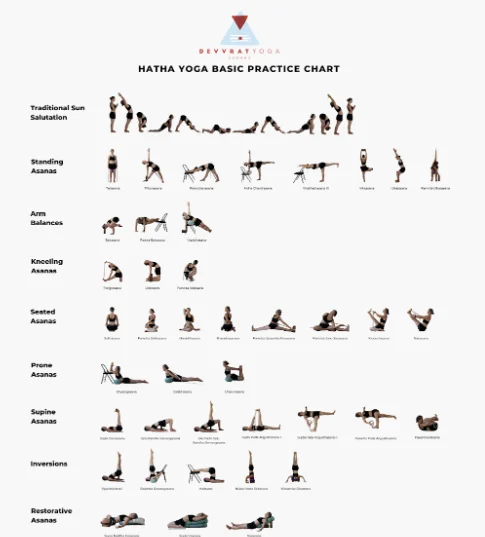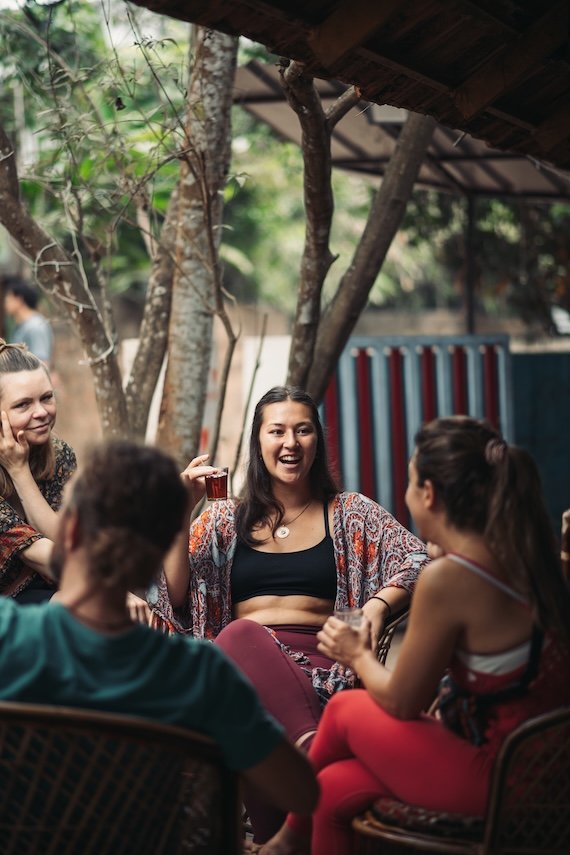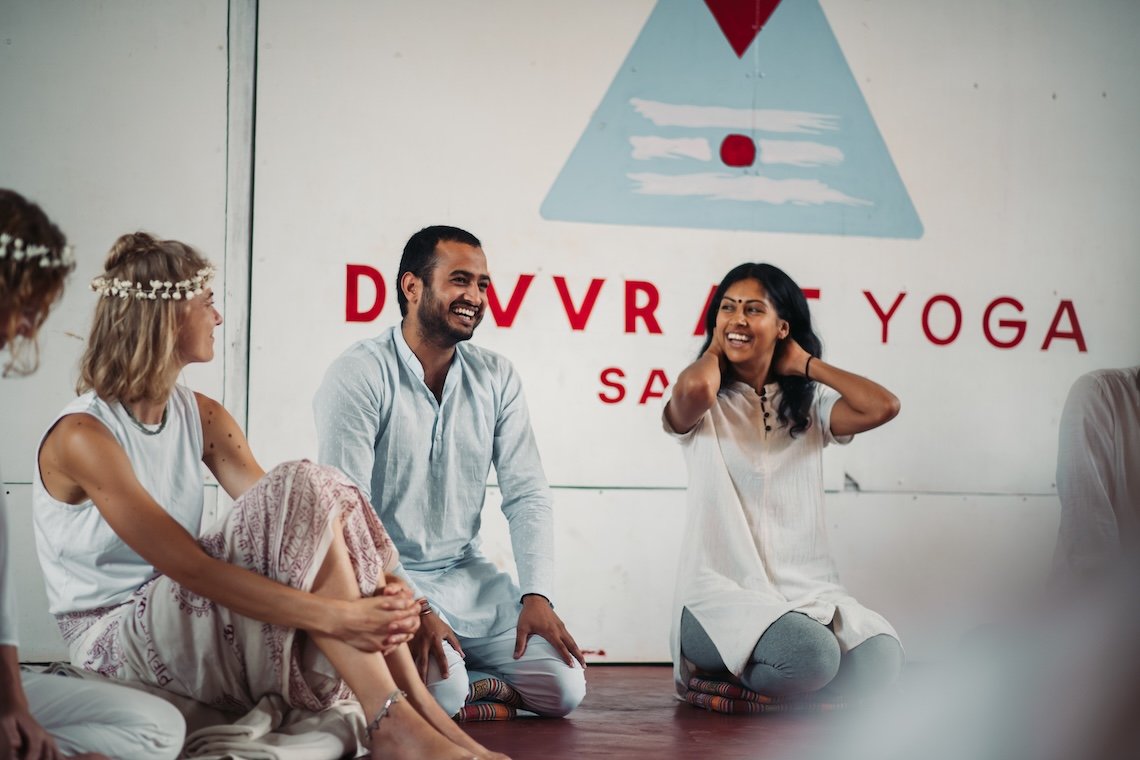What is Hatha Yoga – Tradition & History
What is Hatha Yoga?
Hatha yoga is the ‘Discipline of Force.’ Hatha yoga uses physical force to channel the vital force or energy of the body. The Sanskrit word Hath means force, and physical techniques are used to preserve and move this energy. This technique is thus known as Hatha Yoga.
Hath in Sanskrit also means stubborn, and so Hath yoga is the stubborn practice of yoga without the interference of the five senses and the mind.
One more definition of Hatha yoga is derived from the Sanskrit word, ‘Ha’, means Sun and ‘Tha’ means moon. Thus it is a yoga of alignment of the two energies.
In India, Hatha yoga is popularly associated with the tradition of Nath Sampradaya. Nearly all the Hatha yogic texts are attributed to the Nath Siddhas. The main proponent of Hath yoga is considered to be Baba Gorakhnath, the founder of the Nath monastic movement in India.
Gorakhnath was a disciple of Matseyandranath, the founder of Nath Sampradaya.

Where and when did Hatha Yoga originate?
Lord Shiva is the original Lord of Yoga. he is known as the Adi yogi or the first yogi, and also as the Adiguru or the first guru. Shiva taught the knowledge of yoga first to his wife, Goddess Parvati, and then to the seven sages or Saptrishis. These Rishis then spread throughout the world to spread the yogic knowledge they had learned from Lord Shiva. Thus Shiva was the first teacher of Yoga.
Later Shiva transformed a fish into a human being named Matsayendranath, who became the first teacher to teach yoga to humans.
Shiva then organized a sect known as Nath Sampradaya or lineage, which boasts of great Rishis of their time.
The famous Indologist, James Mallinson, states that in the beginning Hatha yoga was only practiced by the ascetics, in the 1st century CE. The references to it are found in the Sanskrit texts in Hinduism and the Pali canon in Buddhism.
The earliest mention of Hatha yoga is in 17 Buddhist Vajrayana texts and alludes to mainly tantric works.
In pre-classical times the first texts of yoga were written on palm leaves, and therefore, there is no record of these. Hatha yoga, however, was developed in the post-classical yoga period of time and is more of a physical form of yoga.
Swami Swatmarama compiled the Hatha Yoga Pradipika in the 15th century, where he wrote about the 6 limbs of yoga for achieving Samadhi, and it is thus also known as the six limb yoga or Shatanga Yoga.
The journey of Hatha Yoga from ancient to modern:
The modern yoga practitioners of today try to fit in a 30-minute yoga session in their early morning routine or switch on a 5-minute meditation app. This was not how yoga was practiced in ancient times. The yogis were renunciates and undertook an ascetic life by giving up their families, riches, properties, and livelihood.
This ascetic tradition emerged on the borders of Nepal and India and merged with the Hindu traditions. The original Hatha yogis did Tapas to refine their body and mind. Reincarnation and Karma were a central part of their thinking. They performed extraordinary physical feats like submerging themselves in cold water, standing on one leg, or hanging upside down in the bat penance for long periods of time. They did this with the objective of controlling their mind, body, and their senses.
Hatha yogis had been traveling abroad since the time of Alexander The Great and influencing the gymnasts and acrobats of the western world. But, it was when Swami Vivekananda visited the west that Yoga entered the consciousness of the western world in its true form.

What are the six limbs of Hatha yoga?
The six limbs of Shatanga yoga or Hatha yoga are:
- Asana or the steady comfortable state of mind.
- Pranayama to increase the capacity to retain breath.
- Pratyahara or a withdrawal from the sensory inputs.
- Dharana or the art of focusing the mind on a single point.
- Dhyana or going inward to observe oneself.
- Samadhi or becoming free from Maya.
What are the benefits of Hatha Yoga?
Some primary physical benefits of hatha yoga are :
Some mental benefits of Hatha Yoga are
What are the main aims of Hatha Yoga?
Even though Hatha yoga has branched off into several styles and different schools of practice, its main aim is one of unified consciousness. Along with these, the primary aims of Hatha yoga are :
Some early works of Hatha Yoga are:
• Amraugha Prabodha, by Gorakhnath, reveals the three bandhas, to lock the vital energy in the body and raise the kundalini.
•Dattatreya Yoga Shastrais a Vaisnava text that provides a systematic form of Hatha yoga. It teaches the eight mudras that were undertaken by Rishi Kapila and his disciples.
• Viveka Martanda is attributed to Gorakhnath and teaches various bandhas like Mahamudra, nabhomudra, khecaribandha, etc. It strives to raise the kundalini with fore yoga and teaches knowledge of the six chakras.
• Goraksasataca, teaches the stimulation of Saraswati. It is done by wrapping cloth on the tongue and pulling it. It believes that the control of the mind is possible through the control of the breath.
• Hatha Yoga Pradipikais the most influential text of Hatha yoga. It lists 35 great yoga Siddhas. It starts with Adinatha Or Lord Shiva and goes on to Matseyandranath, and Gorakhnath.
• Gheranda Samhita,or the Gheranda collection, is a compilation of Sanskrit texts on the subject of yoga. There are 14 texts, and they are in an encyclopedic form. It is one of the three most important scriptures on yoga, along with Shaiva Samhita, and Yoga Pradipika. It promotes ‘vessel yoga’ with a depiction of both body and mind as being vessels that carry and serve the soul or Atman.
Topics in Hatha Yoga Pradipika:
Conclusion:
what we offer
Explore Our Top Yoga Programs in Kerala

200H Yoga Teacher Training in Kerala
View Program

300H Yoga Teacher Training in Kerala
View Program

Yoga & Ayurveda Retreats
Shorter immersive retreats in Kerala combining yoga, Ayurveda, and meditation. Reconnect with yourself while experiencing India’s holistic traditions.
View Program
